No fewer than 60 GT3 cars lined up for the first round of the Blancpain endurance series at Monza back in April.
In a tough financial climate, that’s a clear vindication for a racing formula that has risen rapidly to prominence.
Central to the GT3 formula is the Balance of Performance (BOP). This FIA-regulated system of juggling weights, power outputs and aerodynamics creates a performance-levelling effect that allows a wide diversity of cars to take part on an equal footing, and it means a Chevrolet Camaro can race against a Ferrari 458 and a Porsche 911. Having built their cars to a tightly written rule book, the teams congregate at a test day where an official FIA driver laps in every car, after which their performance is equalised using the BOP formula.
The JRM Racing Nissan GT-R you see here is a relative newcomer to the class, and it certainly stands out next to the Lamborghinis and Audi R8s. The GT3 GT-R costs £320,000 plus taxes (good value compared with some rivals), and a season’s racing should set you back around £1 million.
The fairly predictable expenditure and on-track competitiveness are key to GT3’s popularity. Here’s how the road and race GT-Rs compare.
Body
JRM starts with a standard body shell, which is strengthened partly with the fitment of an FIA-spec roll cage. The GT3 car shares only its basic monocoque, sills and parts of the side panels with the road car. A fuel filler system is fitted, as are carbonfibre wheel arch extensions and swollen carbonfibre bodywork. Mesh panels in the wheel wells prevent track debris from damaging the car’s underside. The windscreen ‘glass’ is actually polycarbonate.
Engine
The engine is the least exotic part of the JRM GT3 GT-R. It’s described as being “essentially like the road car’s”, but it runs a Pectel engine management system and breathes through a 40mm restrictor. Quoted outputs are 540bhp-plus and 480lb ft-plus. The GT-R is unusual among GT3 protagonists; cars such as the Audi R8 V10 and Mercedes SLS AMG run with less power than their road-going counterparts.
Suspension and Braking
The FIA rulebook determines suspension pick-up points and wheel travel. The GT3 car uses the standard design of wishbone, but lightened and strengthened and with different bushing. Öhlins four-way adjustable dampers are fitted; they are a new development over the two-way adjustable items used last season. Brembo racing calipers and discs feature, but the discs are steel, not carbon-ceramic, in order to keep costs down.
Gearbox
A Hewland semi-automatic single-clutch gearbox with pneumatic paddle shifters replaces the GT-R’s dual-clutch unit, for the sake of strength and reliability. The GT3 car is rear-wheel drive (four-wheel drive is banned), with a carbonfibre propshaft and heavily modified rear subframe. Packaging the transaxle and rear suspension in order to ensure that the flat underfloor could offer the necessary aerodynamic performance was a big challenge.
Cockpit
The GT3 GT-R’s carbonfibre dashboard is taken from a mould of the road car’s dash, but nearly all of the rest is bespoke. The driver sits low with a limited view out but, surprisingly, the seat is on rails with an adjustment bar and the steering wheel uses the road car’s adjustment lever. GT3 cars have to be adaptable to fit both the svelte dimensions of the pro drivers and the, ahem, rather better-fed forms of some of the wealthy amateurs.

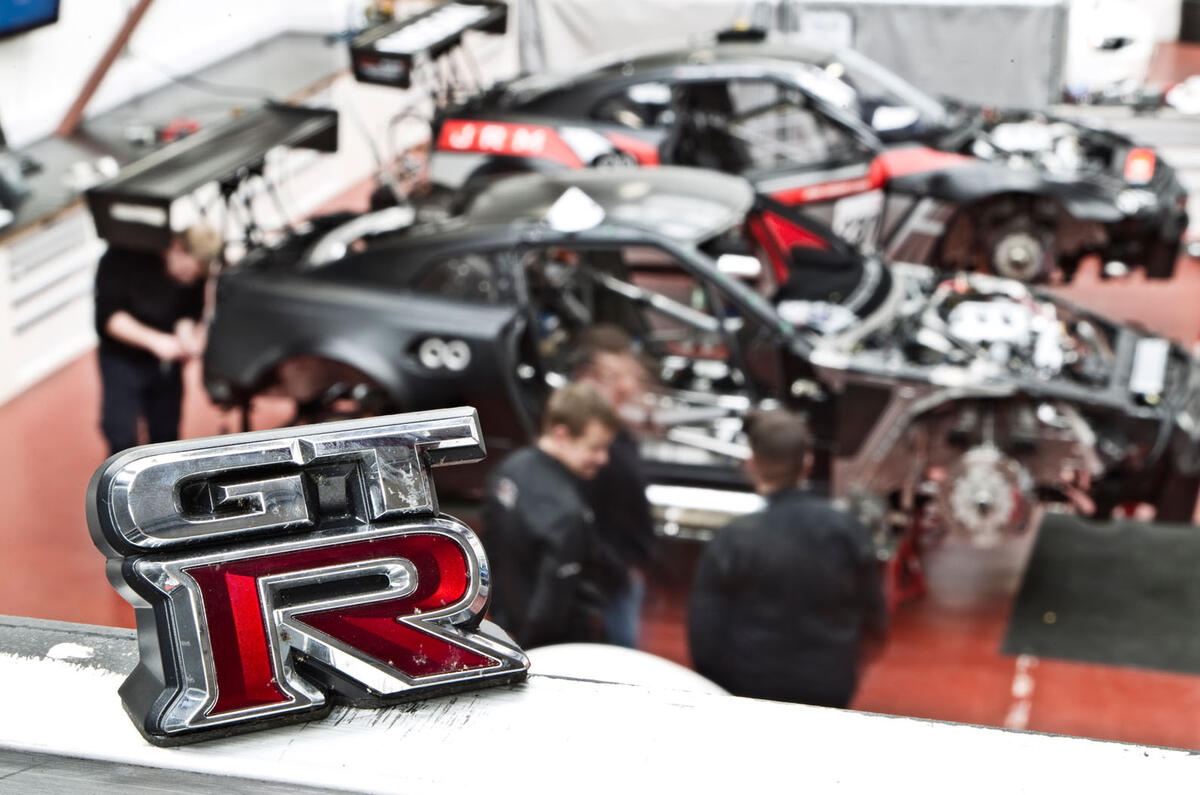

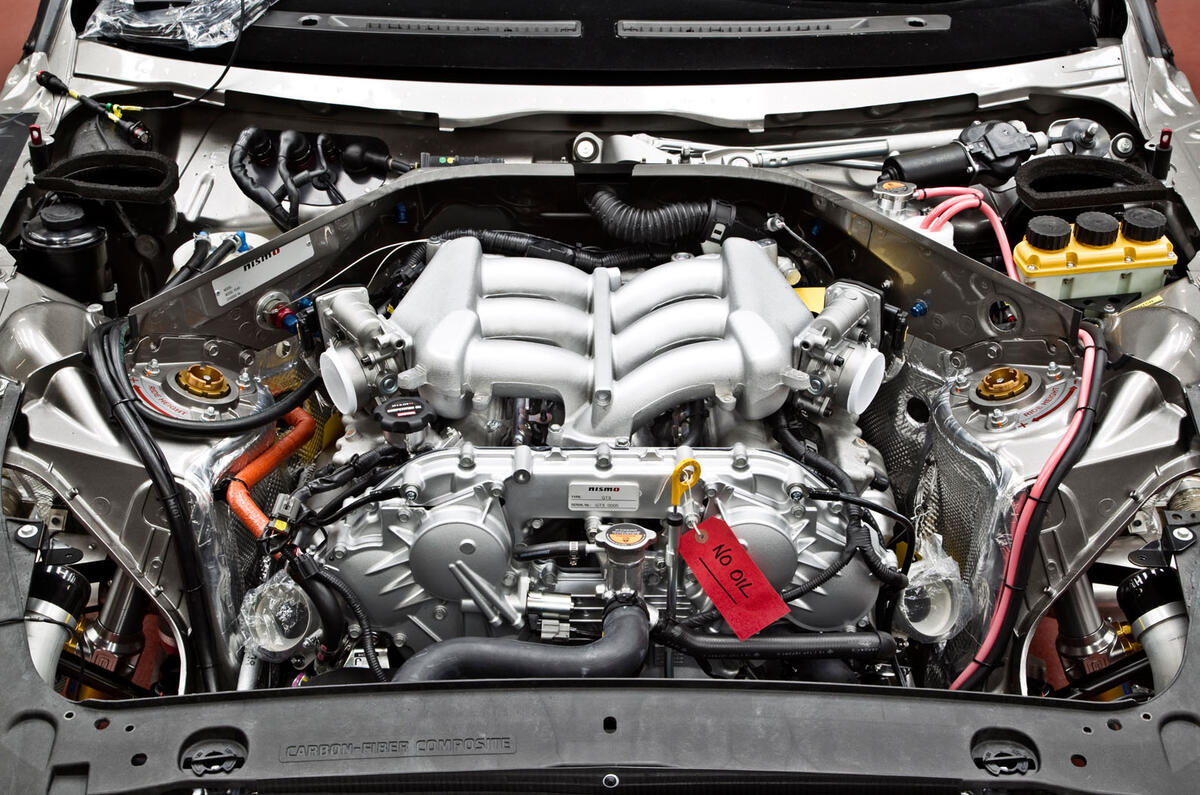

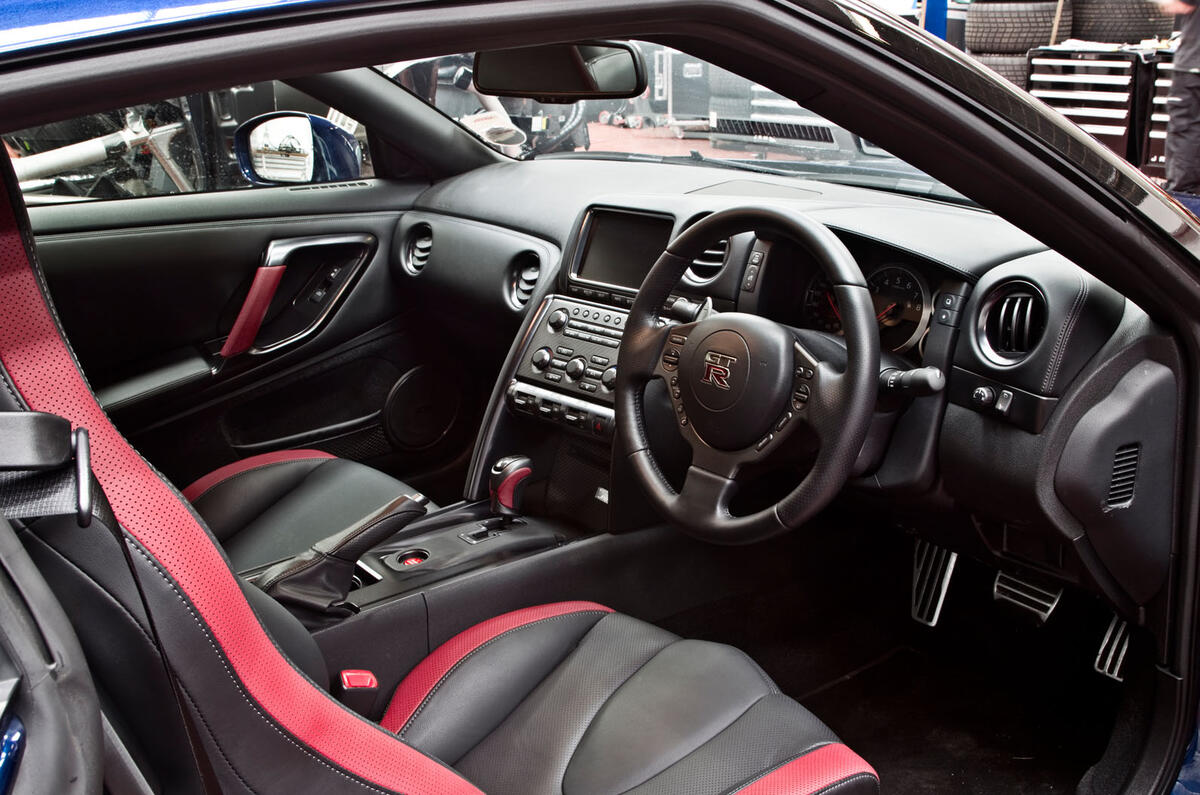
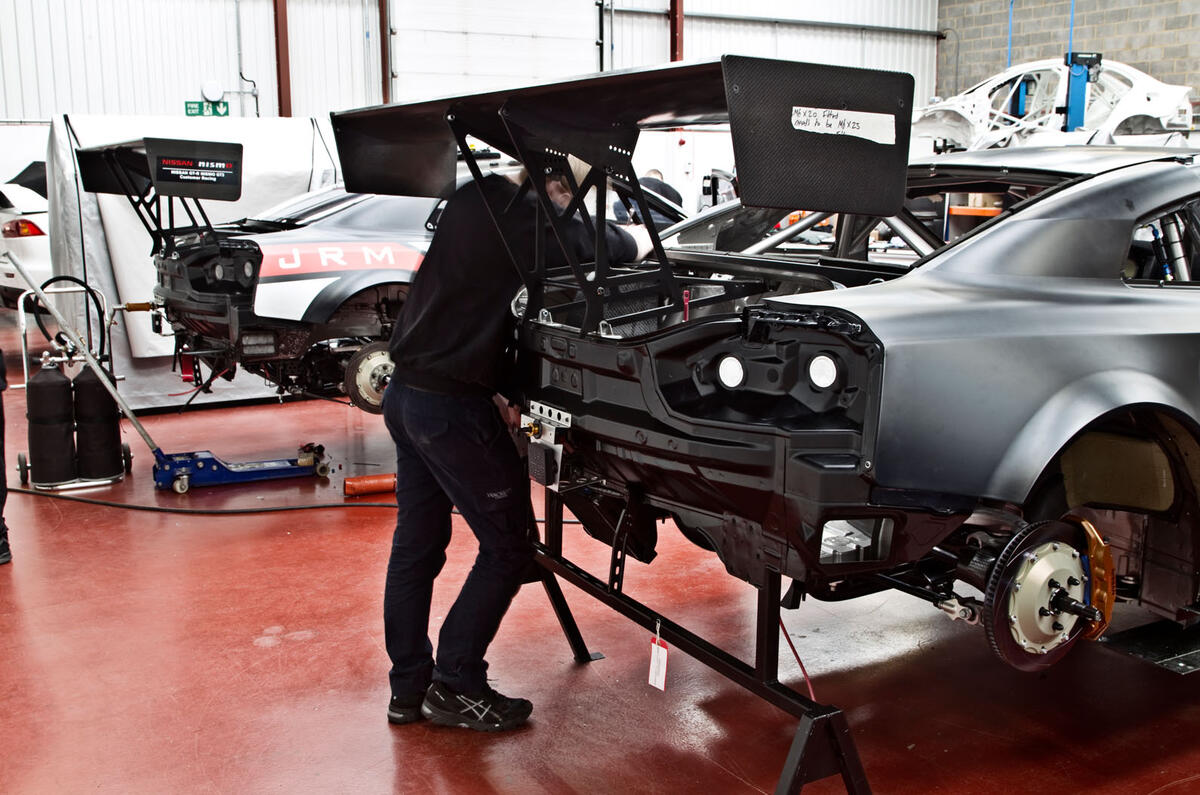
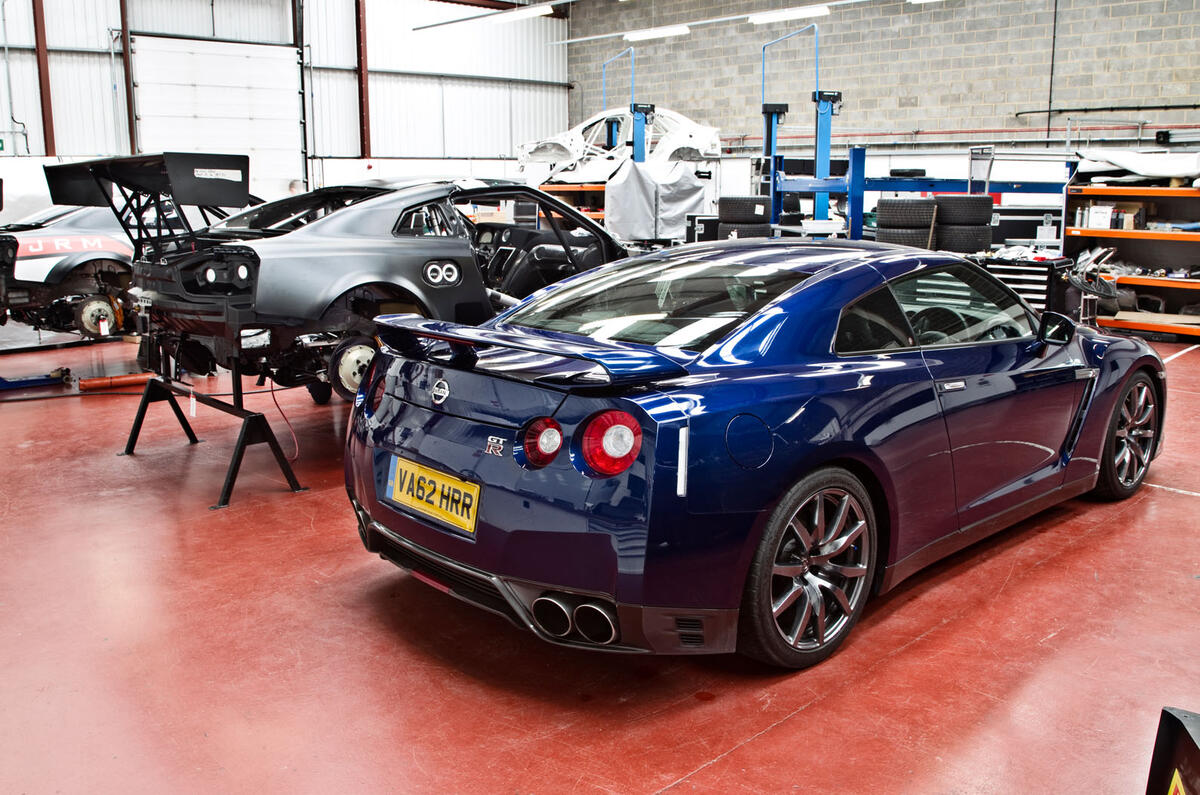
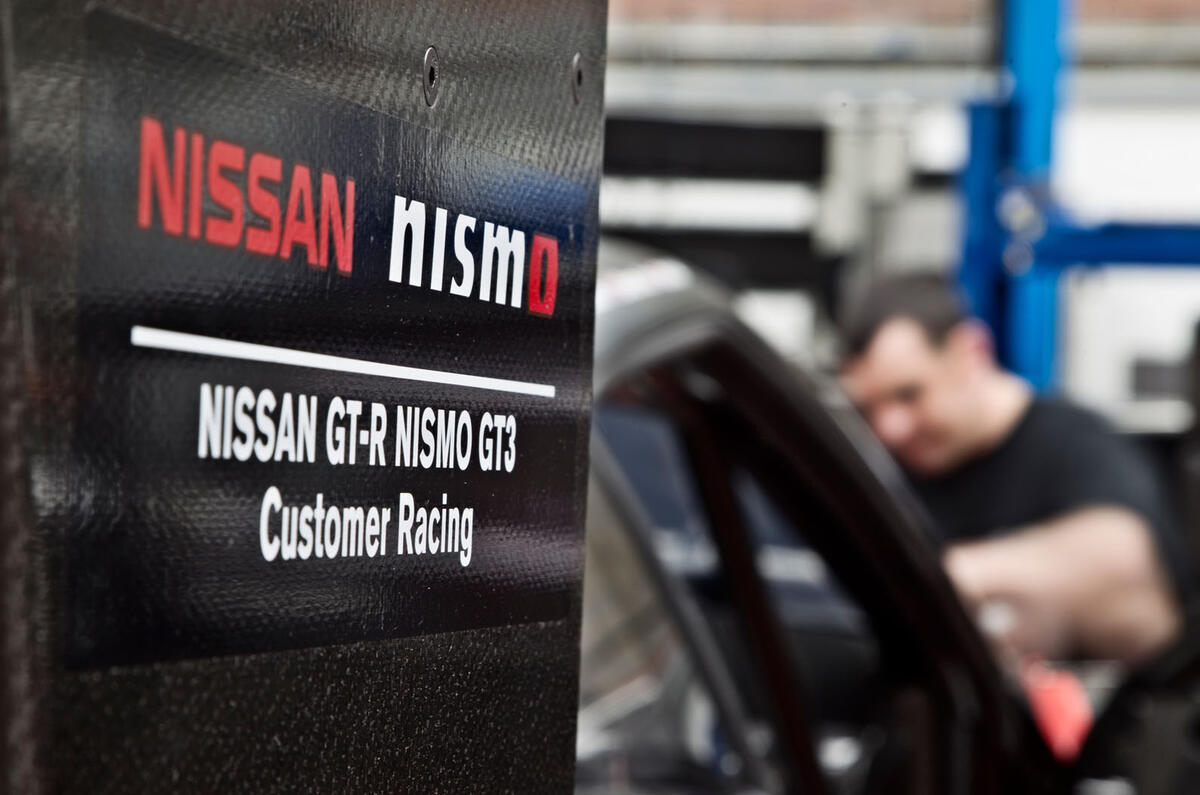

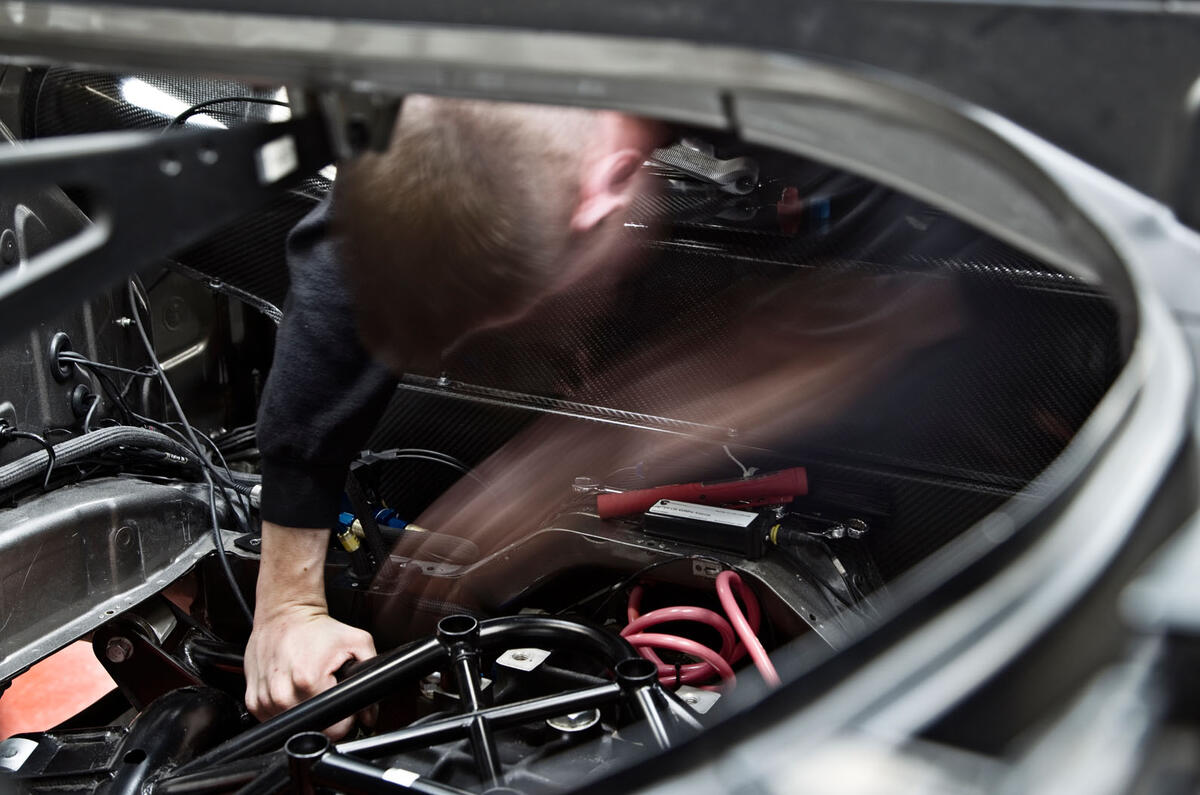

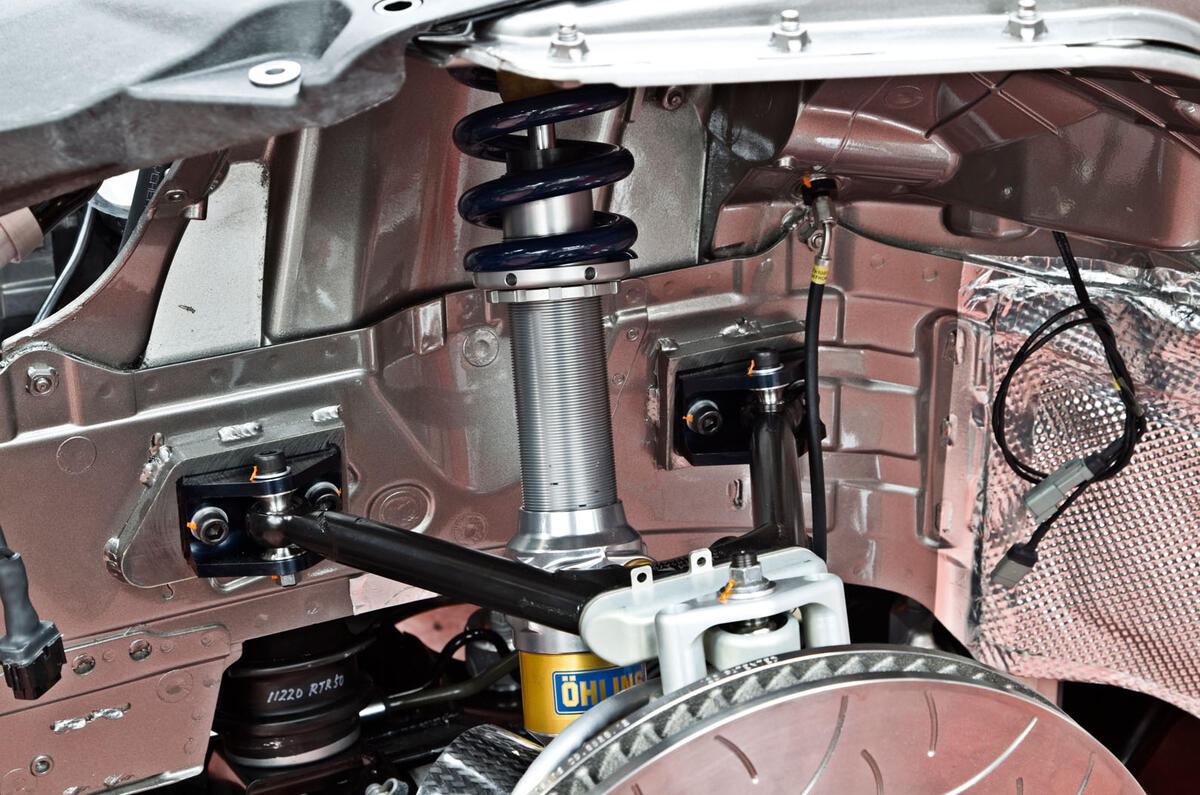

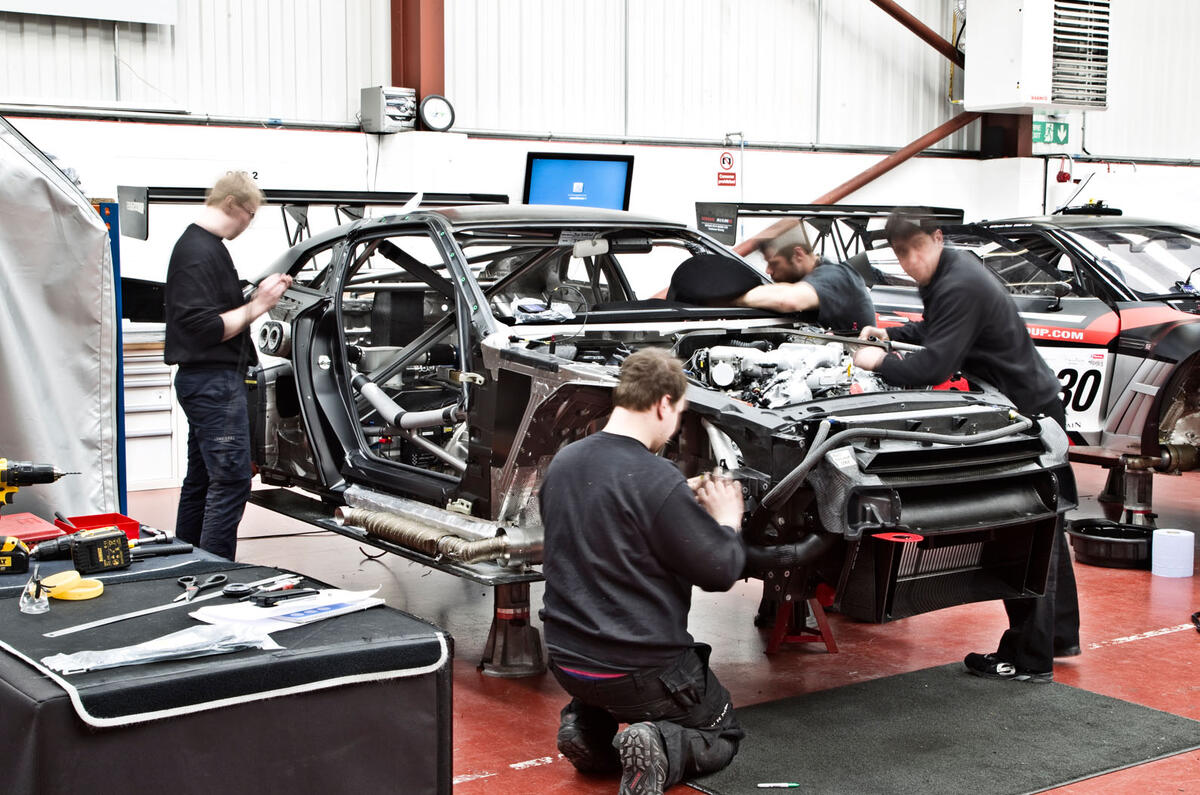
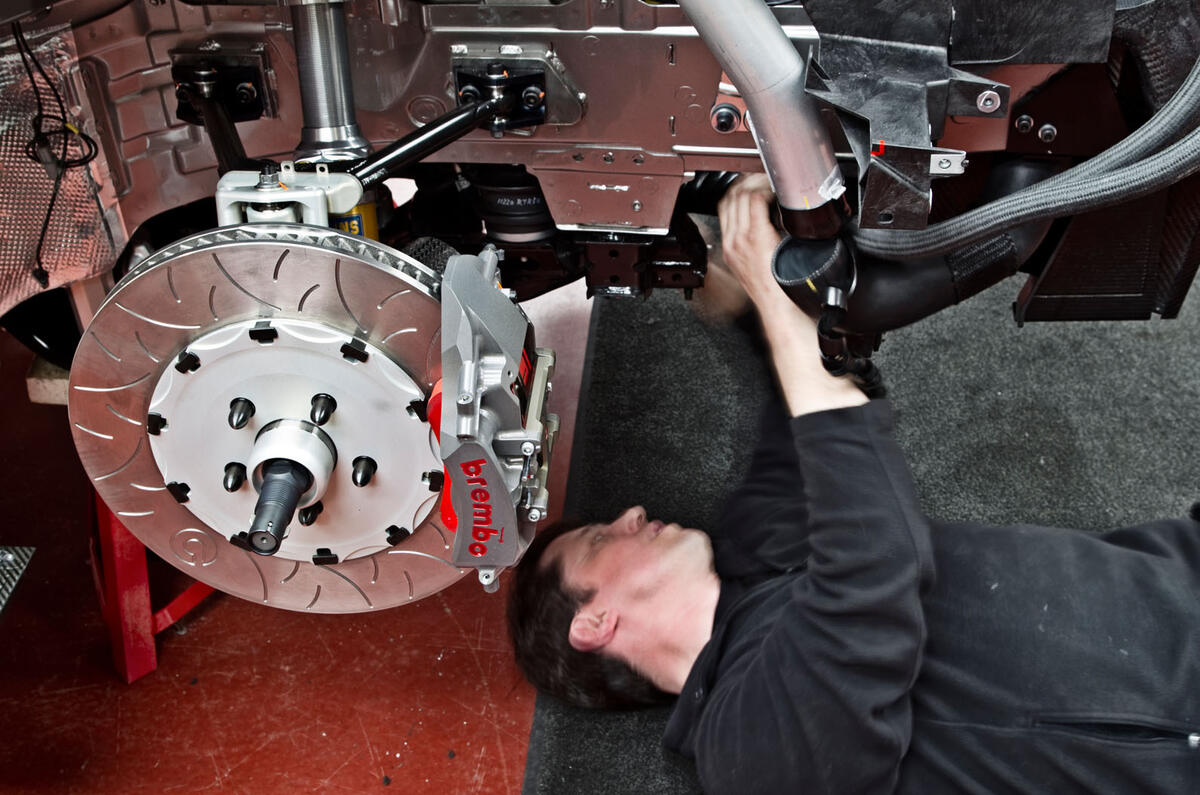
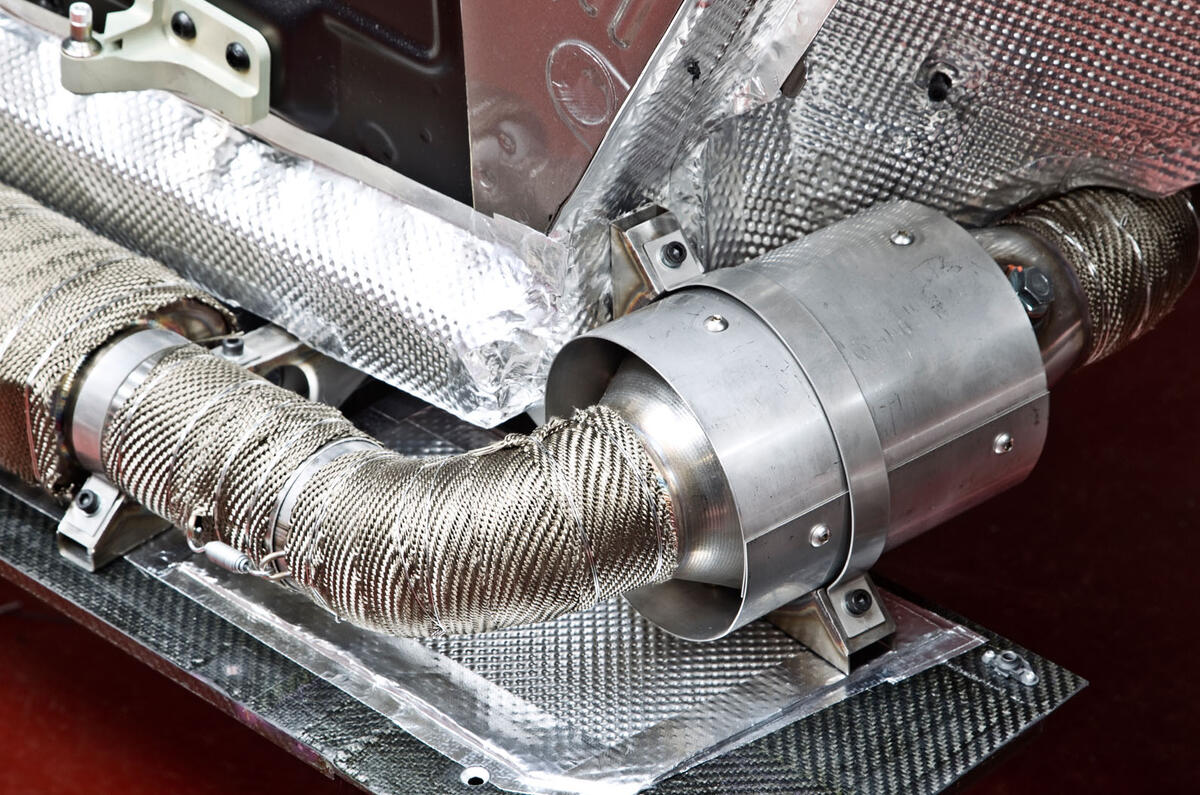
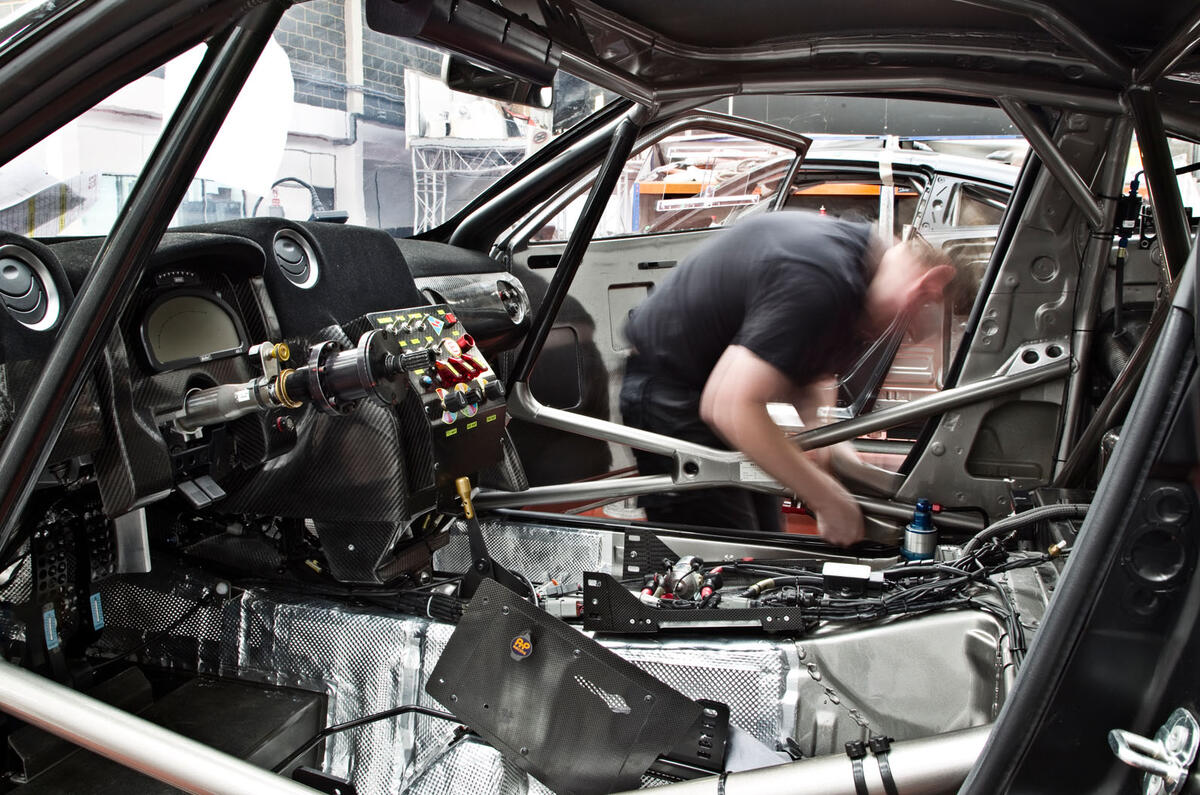
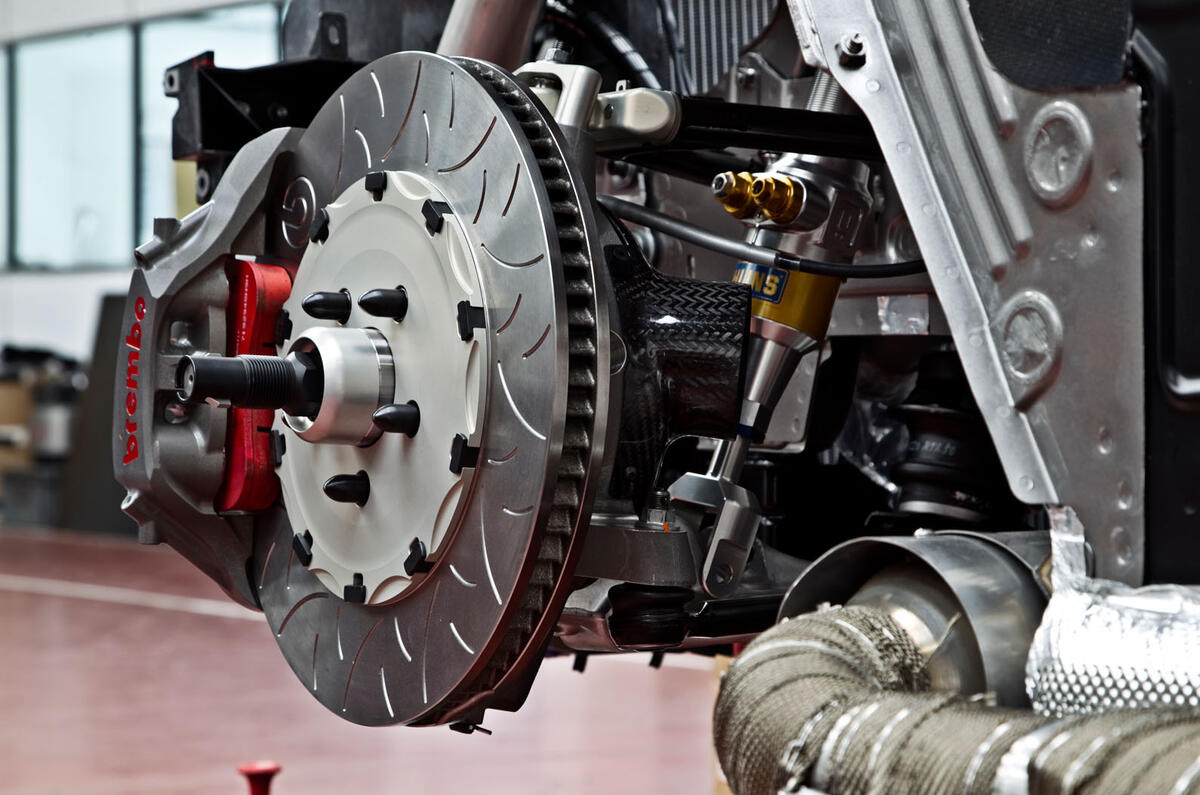
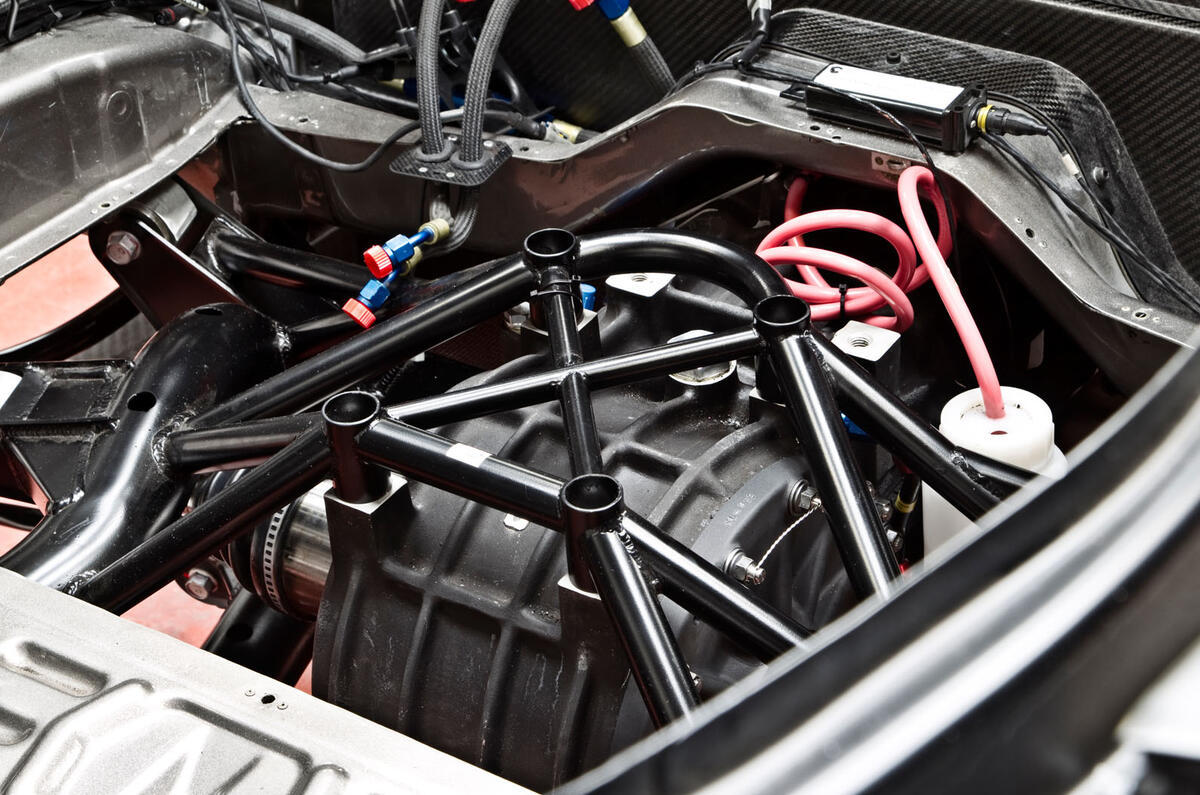
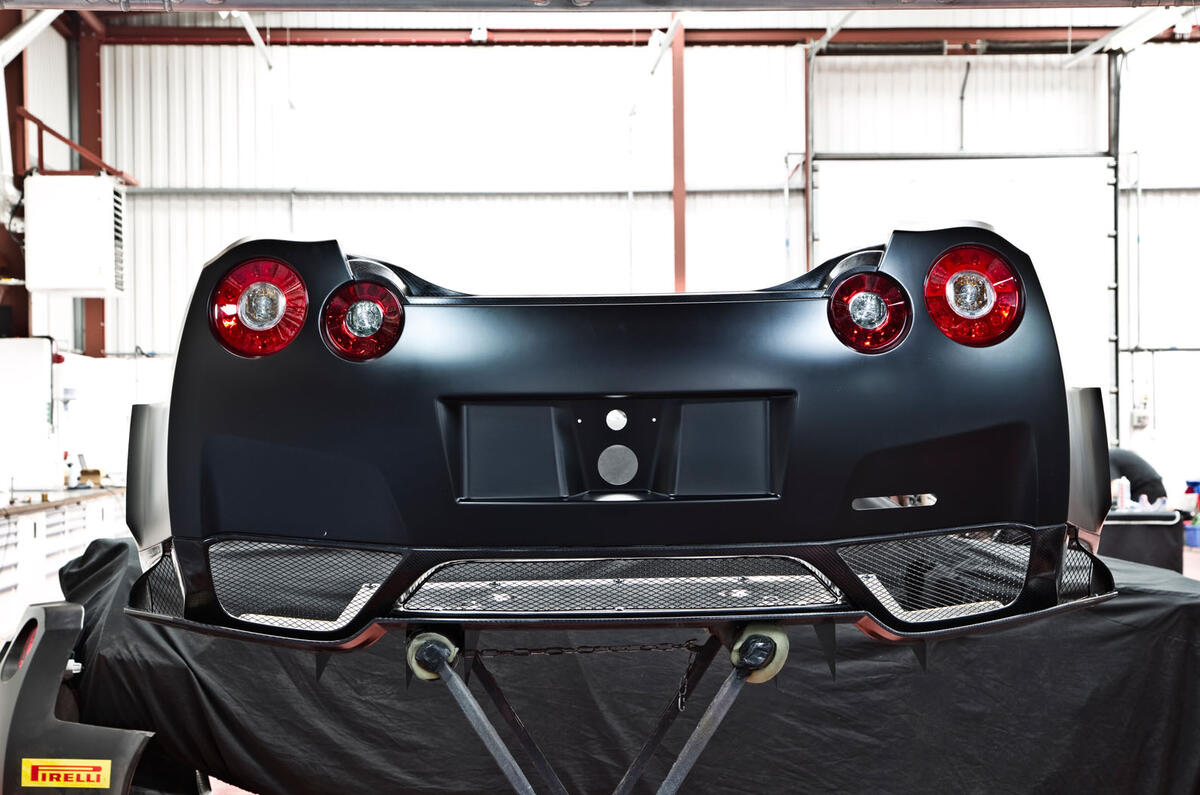
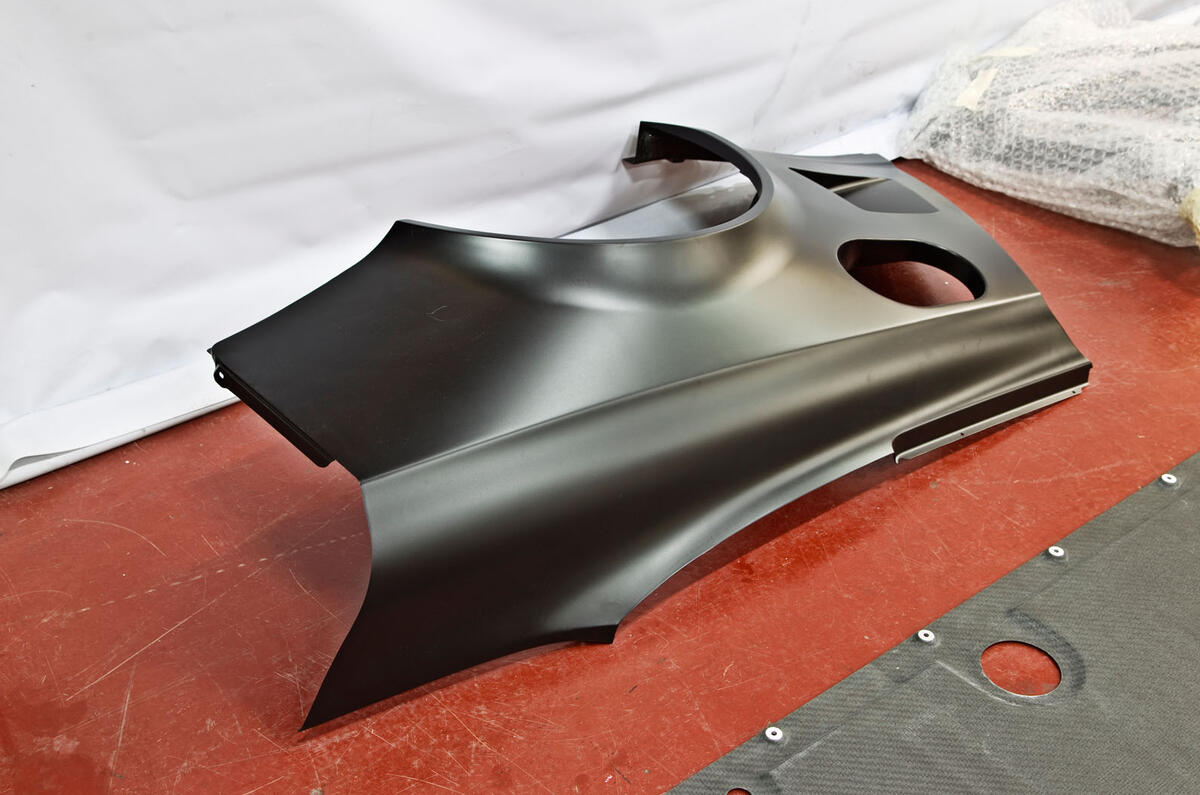
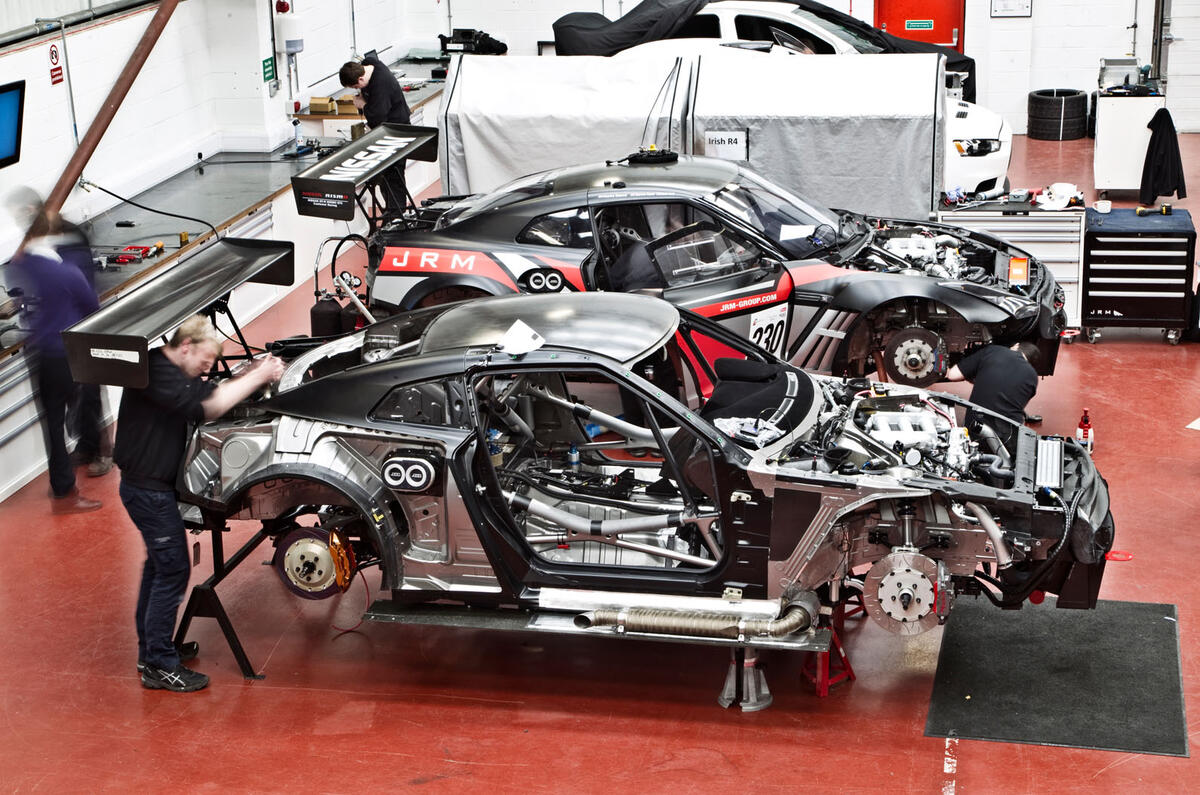









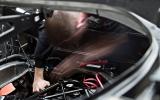

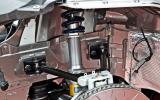


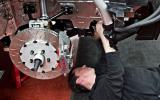
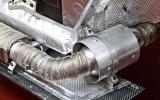




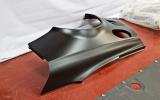


Join the debate
Add your comment
Where's the man behind rotor #1?
Quite a bit spooky if you ask me.
I think the 991 GT3 will make for an excellent rivalry come the '14 season. Albeit, the GT-R could afford to lose a few extra kg's around those massive, bulbous haunches.
Funny looking GT3 GT-R
Funny looking GT3 GT-R picture number 12 !! Would have been good too have a final shot showing a complete GT3 GT-R racing car.